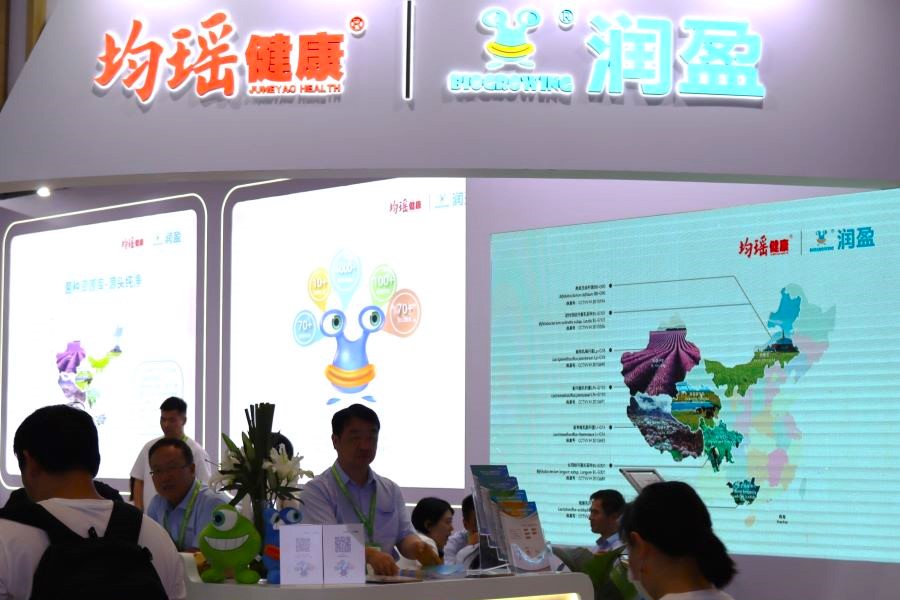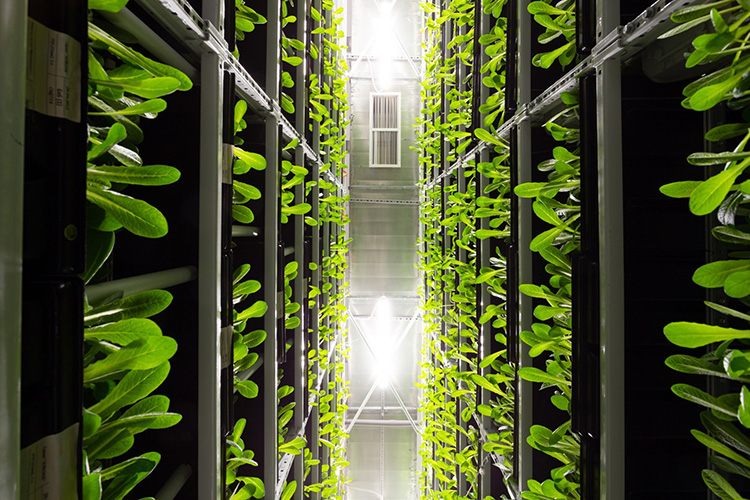Report on the Impact of Collective Action on Smallholder Livelihoods in Malawi
A Focus on Sustainable Development Goals
1. Introduction: Addressing Poverty and Hunger in Sub-Saharan Africa
Despite global progress, Sub-Saharan Africa (SSA) continues to face significant challenges in achieving Sustainable Development Goal 1 (SDG 1: No Poverty) and Sustainable Development Goal 2 (SDG 2: Zero Hunger). Poverty and undernutrition are particularly severe in rural areas, where 82% of the region’s poor reside, primarily depending on agriculture for their livelihoods. This indicates that current efforts are insufficient to meet the ambitious targets set by the global community.
Smallholder farmers are central to achieving these goals. They produce 80% of the food in SSA and Asia and support the livelihoods of two billion people globally. Their role is pivotal in reducing rural poverty and enhancing food security. However, smallholder farmers are constrained by numerous barriers that impede their contribution to sustainable development.
1.1. Key Challenges to Achieving SDG 1 and SDG 2
- Low Agricultural Productivity: A primary obstacle to improving food security (SDG 2) is low productivity. Smallholders in SSA often lack access to essential agricultural inputs. For instance, the adoption rate of improved maize varieties is only 28%, and fertilizer use (approx. 16 kg/ha) is drastically lower than in other regions, hindering yield potential.
- Limited Market Access: High transaction costs, lack of market information, and weak bargaining power prevent farmers from achieving fair prices for their produce. This limits their income potential and obstructs progress toward SDG 1 and SDG 8 (Decent Work and Economic Growth).
- Increasing External Shocks: The livelihoods of smallholder farmers are increasingly threatened by a variety of risks, including climate-related events (SDG 13: Climate Action), the COVID-19 pandemic, and global conflicts, which disrupt production and markets.
In this context, collective action through farmer cooperatives is recognized as a strategic approach to empower smallholders. This study investigates the impact of such collective action on farmer livelihoods in Malawi, a country heavily reliant on smallholder agriculture. It pays special attention to gender-differentiated outcomes to assess progress toward SDG 5 (Gender Equality).
1.2. Research Questions
- To what extent did participation in collective action contribute to increasing household income (SDG 1, SDG 8) among smallholder farmers between 2021 and 2023?
- How did participation in collective action influence the food security status (SDG 2) of smallholder farmers?
- Were there gender-differentiated effects of participation, particularly concerning SDG 5 (Gender Equality)?
2. Background and Literature Review
2.1. Collective Action as a Vehicle for Sustainable Development
Numerous studies confirm that collective action offers significant advantages for smallholder farmers, directly contributing to several SDGs. By organizing into groups, farmers can:
- Enhance Productivity (SDG 2): Collectively purchase agricultural inputs like seeds and fertilizers at lower costs, improving access to resources needed for higher yields.
- Improve Market Access and Income (SDG 1, SDG 8): Aggregate production to enhance bargaining power, access market information, and secure better prices, thereby increasing household incomes.
- Build Resilience (SDG 13): Function as a form of social capital, establishing networks that facilitate risk management and adaptation to external shocks like climate change and market volatility. This aligns with SDG 17 (Partnerships for the Goals) by fostering collaboration.
2.2. Risks and Development Challenges in Malawi
In Malawi, smallholder farmers, who form 80% of the population, are critical to the nation’s food supply but remain trapped in a cycle of low productivity and poverty. This situation presents a major hurdle to achieving SDG 1 and SDG 2.
- Stagnant Productivity: Maize yields have remained low due to limited adoption of improved seeds (30%) and fertilizers, despite their proven benefits.
- Market and Climate Volatility: Extreme maize price fluctuations and recurrent climatic shocks, such as droughts and cyclones exacerbated by El Niño, have severely impacted crop production and economic stability, undermining efforts toward SDG 13.
- Worsening Food Insecurity: The number of people facing acute food insecurity in Malawi doubled from 1.4 million in 2021 to over 3 million in 2023, with 90% residing in rural areas. This sharp decline highlights the fragility of progress toward SDG 2.
2.3. Research Gaps
While some research exists on collective action in Malawi, there is a significant empirical gap regarding its impact on maize smallholders, the country’s predominant farming group. Furthermore, few studies have assessed the effectiveness of collective action amid recent global uncertainties. This study addresses this gap by providing evidence on how collective action influences household income (SDG 1) and food security (SDG 2), with a crucial analysis of gender-differentiated outcomes (SDG 5).
3. Methodology
3.1. Study Area
The study was conducted in Kasungu District, Malawi, a region where maize is the primary crop. The district has suffered from severe climate shocks and a tripling of food insecurity between 2021 and 2023. A Smallholder Farmer Support Program (SFSP), supported by Good Neighbors International (GNI) and the Korea International Cooperation Agency (KOICA), was implemented in the area. This partnership (SDG 17) aimed to build cooperative capacity through input loans and training in climate-smart agriculture (CSA), contributing to SDG 12 (Responsible Consumption and Production) and SDG 13.
3.2. Data Collection and Analysis
A mixed-methods approach was used. Qualitative data were collected through 10 focus group interviews with cooperative members, non-members, and other stakeholders. Quantitative data were gathered from household surveys with 475 households in 2021 (baseline) and 2023 (endline). The impact of collective action on household income (proxy for SDG 1) and the Food Consumption Score (FCS, proxy for SDG 2) was assessed using a difference-in-differences (DID) model, enhanced with entropy balancing (EB) and doubly robust (DR-DID) methods to ensure analytical rigor.
4. Results
4.1. Qualitative Findings: How Collective Action Drives Progress
Interviews with cooperative members revealed several key advantages of collective action that align with the SDGs:
- Access to Knowledge for Sustainable Production (SDG 2, SDG 12): Members reported high satisfaction with access to agricultural extension services, which provided training on fertilizer application and conservation agriculture practices like minimum tillage and intercropping.
- Improved Market Participation and Economic Growth (SDG 8): Transparent sharing of market information and collective bargaining enabled members to secure higher prices, directly improving their economic standing.
4.2. Quantitative Findings: Impact on Household Income and Food Security
The DID analysis demonstrated the significant positive impact of collective action on achieving SDG 1 and SDG 2.
- Impact on Household Income (SDG 1): Cooperative members experienced an income increase of 216–264 USD relative to non-members. This shows that collective action is a powerful tool for poverty reduction.
- Impact on Food Security (SDG 2): Members had a Food Consumption Score (FCS) that was 5–7 points higher than non-members. This indicates that despite worsening food security conditions in Malawi, collective action helped members maintain a more diverse diet, thereby building resilience against hunger.
4.3. Heterogenous Effects: A Gender Perspective (SDG 5)
The analysis revealed significant gender-differentiated impacts, highlighting challenges in achieving SDG 5 (Gender Equality).
- Male-Headed Households: Experienced statistically significant positive impacts on both household income (SDG 1) and dietary diversity (SDG 2).
- Female-Headed Households: Experienced a significant increase in household income, often greater than their male counterparts. However, this did not translate into a statistically significant improvement in their dietary diversity (FCS).
This finding suggests that for female-headed households, increased income alone is not sufficient to improve food security. Other barriers related to social norms, market access, and intra-household decision-making may be preventing them from realizing the full benefits of collective action.
5. Discussion
The findings confirm that collective action is a highly effective strategy for advancing SDG 1 (No Poverty) and SDG 2 (Zero Hunger), particularly by building resilience against climate and market shocks. However, the gendered disparity in outcomes is a critical concern. The lack of food security improvement for female-headed households, despite income gains, indicates that interventions must be more gender-transformative to achieve SDG 5.
Factors such as differences in economic status, spending priorities, and limited market access for women may explain this gap. To be effective, interventions must move beyond simple income generation and address these broader structural barriers to empowerment.
Furthermore, the study underscores the importance of partnerships (SDG 17). Support from NGOs was a key determinant of participation in cooperatives, highlighting the catalytic role that external organizations can play in fostering grassroots collective action.
6. Conclusion and Policy Implications
This study provides strong evidence that collective action through agricultural cooperatives significantly improves household income and enhances food security resilience for smallholder farmers in Malawi, contributing directly to SDG 1 and SDG 2. However, it also reveals a critical gap in achieving SDG 5, as the benefits for food security were not equally distributed to female-headed households.
These findings lead to the following policy implications:
- Promote Gender-Responsive Interventions: Policies and programs supporting collective action must be designed with a specific focus on addressing the unique constraints faced by women. This includes enhancing their agency, improving market access, and ensuring their inclusive participation in decision-making processes within cooperatives.
- Strengthen Multi-Stakeholder Partnerships (SDG 17): Governments should collaborate with NGOs and the private sector to scale up successful collective action models. Supportive policy frameworks and resource allocation are needed to create a sustainable ecosystem for farmer organizations to thrive.
- Build Resilience for Long-Term Sustainability: Given the increasing frequency of climate and economic shocks, continuous support for collective action is essential. This includes promoting climate-smart agriculture (SDG 13) and strengthening market linkages to ensure that smallholder farmers can build lasting resilience.
Ultimately, while collective action is a powerful engine for development, its full potential will only be realized when its benefits are equitably shared, ensuring that progress toward the Sustainable Development Goals leaves no one behind.
Analysis of Sustainable Development Goals in the Article
1. Which SDGs are addressed or connected to the issues highlighted in the article?
The article addresses several Sustainable Development Goals (SDGs) by focusing on the interconnected challenges of poverty, food security, agricultural productivity, and gender disparities among smallholder farmers in Sub-Saharan Africa, particularly in Malawi. The core SDGs identified are:
- SDG 1: No Poverty – The article’s central theme is the struggle with poverty in Sub-Saharan Africa, especially in rural areas where agriculture is the main livelihood. It directly investigates how collective action can increase household income to alleviate poverty.
- SDG 2: Zero Hunger – The article extensively discusses undernutrition, food insecurity, and low agricultural productivity. It examines the impact of collective action on food security, measured by the Food Consumption Score (FCS), and analyzes factors hindering productivity, such as limited access to improved seeds and fertilizers.
- SDG 5: Gender Equality – The study specifically analyzes the “gender-differentiated effects” of participating in collective action. It compares the outcomes for male-headed and female-headed households, highlighting disparities in benefits, particularly concerning food security.
- SDG 17: Partnerships for the Goals – The article highlights the role of collective action through farmer cooperatives and the crucial support from external organizations, such as NGOs (Good Neighbors International) and international cooperation agencies (KOICA), demonstrating a multi-stakeholder partnership approach to development.
2. What specific targets under those SDGs can be identified based on the article’s content?
Based on the issues discussed, the following specific SDG targets are relevant:
-
SDG 1: No Poverty
- Target 1.1: By 2030, eradicate extreme poverty for all people everywhere. The article directly addresses this by noting that in rural Sub-Saharan Africa, “52% of the population is in extreme poverty.” The study’s focus on increasing household income through cooperatives is a direct strategy to combat this.
- Target 1.2: By 2030, reduce at least by half the proportion of men, women, and children of all ages living in poverty in all its dimensions according to national definitions. The study’s primary outcome variable, “household income,” is a key measure of economic poverty, and the research aims to see how collective action contributes to its reduction.
- Target 1.4: By 2030, ensure that all men and women, in particular the poor and the vulnerable, have equal rights to economic resources. The article’s analysis of gender-differentiated effects on income for female-headed households connects to this target, as it explores whether collective action provides equal economic benefits.
-
SDG 2: Zero Hunger
- Target 2.1: By 2030, end hunger and ensure access by all people, in particular the poor and people in vulnerable situations, including infants, to safe, nutritious and sufficient food all year round. The article highlights the severe food insecurity in Malawi, where “over three million people… had experienced high acute food insecurity,” and uses the Food Consumption Score (FCS) to measure the impact of interventions on food access and dietary diversity.
- Target 2.3: By 2030, double the agricultural productivity and incomes of small-scale food producers, in particular women, indigenous peoples, family farmers, pastoralists and fishers. The article is centered on smallholder farmers and examines how collective action can overcome challenges like “low productivity” and “limited market access” to increase both crop yields and “household income.” It specifically mentions low maize yields and limited use of inputs like improved seeds and fertilizers as key problems.
- Target 2.4: By 2030, ensure sustainable food production systems and implement resilient agricultural practices that increase productivity and production. The article discusses the adoption of “conservation agriculture (including minimum tillage, crop rotation, intercropping, and natural mulching)” and “climate-smart agriculture (CSA) practices” as benefits of collective action, which are resilient practices aimed at sustainable production.
-
SDG 5: Gender Equality
- Target 5.a: Undertake reforms to give women equal rights to economic resources, as well as access to ownership and control over land and other forms of property, financial services, inheritance and natural resources, in accordance with national laws. The study’s investigation into “heterogeneous effects of participation in collective action” for “female-headed households” directly assesses whether women are gaining equal economic benefits (income) and improved well-being (food security) from these cooperative structures. The finding that female-headed households did not see a significant improvement in food security despite income gains points to persistent inequalities.
-
SDG 17: Partnerships for the Goals
- Target 17.16: Enhance the Global Partnership for Sustainable Development, complemented by multi-stakeholder partnerships that mobilize and share knowledge, expertise, technology and financial resources. The project described in the article, the “Smallholder Farmer Support Program (SFSP),” is a prime example of such a partnership, involving Good Neighbors International (NGO), the Korea International Cooperation Agency (KOICA), and local farmer cooperatives in Malawi.
- Target 17.17: Encourage and promote effective public, public-private and civil society partnerships, building on the experience and resourcing strategies of partnerships. The article emphasizes that “external interventions from NGOs” are crucial for promoting collective action and that collaboration among NGOs, government extension workers, and farmer organizations is key to success.
3. Are there any indicators mentioned or implied in the article that can be used to measure progress towards the identified targets?
Yes, the article mentions several quantitative and qualitative indicators that align with the official SDG indicators for measuring progress.
-
For SDG 1 (No Poverty)
- Indicator 1.1.1 (Proportion of population below the international poverty line): The article provides context by stating that “52% of the population is in extreme poverty” in rural SSA.
- Indicator 1.2.1 (Proportion of population living below the national poverty line): Progress is measured through changes in “household income,” which the study quantifies in USD. The analysis shows cooperative members experienced an income increase of “216–264 USD” relative to non-members.
-
For SDG 2 (Zero Hunger)
- Indicator 2.1.2 (Prevalence of moderate or severe food insecurity in the population, based on the Food Insecurity Experience Scale): The article uses the “Food Consumption Score (FCS)” as a direct measure of food security and dietary diversity, finding that cooperative members scored “5–7 points higher than non-members.” It also cites the number of people in Malawi experiencing “high acute food insecurity,” which doubled from 1.4 million in 2021 to over 3 million in 2023.
- Indicator 2.3.1 (Volume of production per labour unit by classes of farming/pastoral/forestry enterprise size): The article implies this by discussing low productivity, citing specific figures like maize yield stagnating at “~2 t/ha” and low fertilizer use (“~16 kg/ha” in SSA and “~96 kg” in Malawi).
- Indicator 2.3.2 (Average income of small-scale food producers, by sex and indigenous status): This is a primary outcome of the study, measured as “household income” in USD for smallholder farmers. The results are disaggregated by the gender of the household head.
-
For SDG 5 (Gender Equality)
- Indicator 5.a.1 (Proportion of total agricultural population with ownership or secure rights over agricultural land, by sex): While not measuring land ownership directly, the study uses the “proportion of female-headed households” (20% among members, 25% among non-members) as a key variable for disaggregating data. It analyzes the differential impact of collective action on the income and food security of these households, which is central to understanding women’s access to economic resources.
-
For SDG 17 (Partnerships for the Goals)
- Qualitative Evidence for Targets 17.16 & 17.17: The article provides descriptive evidence of a multi-stakeholder partnership. It names the specific actors—”Good Neighbors International (GNI),” “the Korea International Cooperation Agency (KOICA),” and local “agricultural cooperatives”—and describes their roles in providing “agricultural input loans, capacity-building programs for collective marketing, and training.” The finding that “NGO support was a key determinant of cooperative membership” serves as an indicator of the partnership’s effectiveness.
4. Summary Table of SDGs, Targets, and Indicators
| SDGs | Targets | Indicators Identified in the Article |
|---|---|---|
| SDG 1: No Poverty |
1.1: Eradicate extreme poverty. 1.2: Reduce poverty in all its dimensions. 1.4: Equal rights to economic resources. |
– Proportion of population in extreme poverty (Cited as 52% in rural SSA). – Change in household income (Measured in USD, with cooperative members gaining $216–$264 more than non-members). – Income changes disaggregated for female-headed households. |
| SDG 2: Zero Hunger |
2.1: End hunger and ensure access to food. 2.3: Double productivity and incomes of small-scale food producers. 2.4: Ensure sustainable food production systems. |
– Prevalence of acute food insecurity (Number of people affected in Malawi doubled from 1.4M to 3M). – Food Consumption Score (FCS) (Cooperative members scored 5-7 points higher). – Agricultural productivity (Maize yield at ~2 t/ha; fertilizer use at ~96 kg/ha in Malawi). – Adoption rate of improved seeds (Cited as ~30% for maize in Malawi). – Average income of smallholder farmers (Measured in USD). – Adoption of conservation and climate-smart agriculture practices. |
| SDG 5: Gender Equality | 5.a: Give women equal rights to economic resources. |
– Analysis of outcomes disaggregated by gender of household head. – Proportion of female-headed households (20% in member group, 25% in non-member group). – Differential impact on household income and FCS for female-headed households (income increased, but FCS did not significantly improve). |
| SDG 17: Partnerships for the Goals |
17.16: Enhance the Global Partnership for Sustainable Development. 17.17: Encourage effective public, public-private and civil society partnerships. |
– Descriptive evidence of a multi-stakeholder partnership (KOICA, Good Neighbors International, and local cooperatives). – Role of NGO support as a key determinant of participation in collective action. |
Source: frontiersin.org







